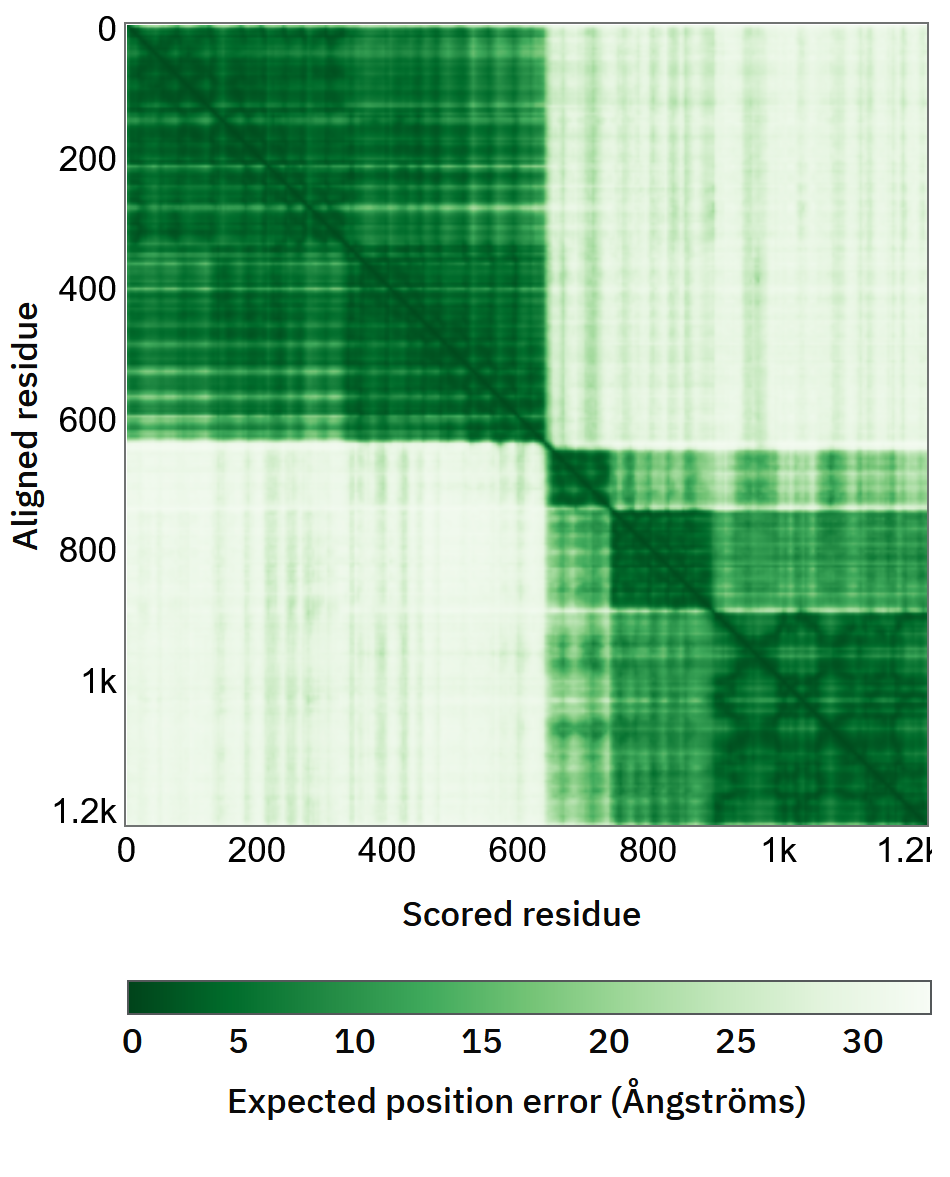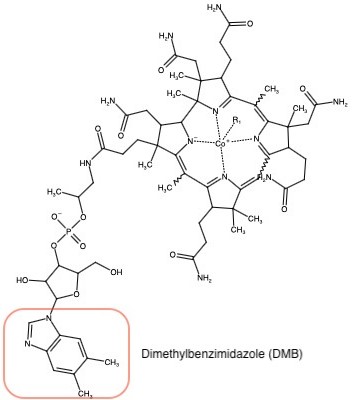Methionine synthase
From Proteopedia
| Line 20: | Line 20: | ||
<StructureSection load='1bmt' size='310' side='right' caption='B12 dependent fragment of E. coli methionine synthase with Cobalt (in pink)' scene=''> | <StructureSection load='1bmt' size='310' side='right' caption='B12 dependent fragment of E. coli methionine synthase with Cobalt (in pink)' scene=''> | ||
| - | The full structure of MS has yet to be determined but studies have found it contains | + | The full structure of MS has yet to be determined but studies have found it contains four domains, each with a unique function that bind to Cob(I)alamin as the methyl carrier, MTHF as the methyl donor in the catalytic cycle, homocysteine as the methyl acceptor, and S-adenosylmethionine or SAM, as the methyl donor in the reactivation cycle<ref name="Bandarian et al">DOI: 10.1038/nsb738</ref>. The orientation of the domains changes during the catalytic cycle. Shown here is the [[<scene name='90/907471/Superposition_1/2'>theoretical prediction</scene> of the structure by the alphafold algorithm, with experimental structures of the N-terminal 2 domains as well as of the C-terminal 2 domins superposed. As the graph below shows, the prediction has high confidence in the internal structure of individual domains but not the relative orientation. |
| + | |||
| + | [[Image:Position error alphafold P13009.PNG]] | ||
| + | |||
| + | During each cycle, the domains must be positioned close enough to Cobalamin in order for methyl transfers to be successful. Conformations of MS allows substrates to be presented to Cobalamin for reactions to occur. | ||
== Vitamin B12 == | == Vitamin B12 == | ||
Revision as of 19:15, 21 April 2022
This page is being worked on during the Spring 2022 semester.
Methionine synthase (MS; EC: 2.1.1.13) is an important enzyme in one-carbon metabolism. MS catalyzes the transfer of a methyl group from methyltetrahydrofolate (MTHF) to homocysteine, resulting in the formation of methionine. Methionine is an essential amino acid required by our bodies for healthy cell and tissue growth. It is essential as it is not naturally derived in our bodies, thus requiring the conversion of homocysteine to methionine as needed.
Contents |
Function
The change from homocysteine to methionine is an SN2 reaction, as seen above, where the methyl group on N-5 from methyltetrahydrofolate (MTHF), is donated. MTHF is a product of methylenetetrahydrofolate reductase (MTHFR) from the folate cycle MTHFR. This is a complex reaction as tetrahydrofolate (THF), the product, is a poor leaving group and requires a "super nucleophile", vitamin B12 Cob(I)alamin, to carry out the reaction[1][2]; the methyl carrier.
MS is a B12-dependent enzyme responsible for regenerating methionine from homocysteine and uses vitamin B12 Cobalamin as a cofactor. Therefore, any B12 deficiencies can effect the remethylation process.
Relevance
As stated previously, MS is an important enzyme responsible for generating methionine, required by our bodies for healthy cell and tissue growth. Any MS and/or B12 deficiencies can result in diseases such as abnormal birth defects or anemia[2].
Structural highlights
| |||||||||||
References
- ↑ Banerjee R, Ragsdale SW. The many faces of vitamin B12: catalysis by cobalamin-dependent enzymes. Annu Rev Biochem. 2003;72:209-47. doi: 10.1146/annurev.biochem.72.121801.161828. PMID:14527323 doi:http://dx.doi.org/10.1146/annurev.biochem.72.121801.161828
- ↑ 2.0 2.1 Kung Y, Ando N, Doukov TI, Blasiak LC, Bender G, Seravalli J, Ragsdale SW, Drennan CL. Visualizing molecular juggling within a B(12)-dependent methyltransferase complex. Nature. 2012 Mar 14. doi: 10.1038/nature10916. PMID:22419154 doi:10.1038/nature10916
- ↑ 3.0 3.1 Bandarian V, Pattridge KA, Lennon BW, Huddler DP, Matthews RG, Ludwig ML. Domain alternation switches B(12)-dependent methionine synthase to the activation conformation. Nat Struct Biol. 2002 Jan;9(1):53-6. PMID:11731805 doi:10.1038/nsb738
- ↑ Barra L, Fontenelle C, Ermel G, Trautwetter A, Walker GC, Blanco C. Interrelations between glycine betaine catabolism and methionine biosynthesis in Sinorhizobium meliloti strain 102F34. J Bacteriol. 2006 Oct;188(20):7195-204. doi: 10.1128/JB.00208-06. PMID:17015658 doi:http://dx.doi.org/10.1128/JB.00208-06
- ↑ Bandarian V, Ludwig ML, Matthews RG. Factors modulating conformational equilibria in large modular proteins: a case study with cobalamin-dependent methionine synthase. Proc Natl Acad Sci U S A. 2003 Jul 8;100(14):8156-63. doi:, 10.1073/pnas.1133218100. Epub 2003 Jun 27. PMID:12832615 doi:http://dx.doi.org/10.1073/pnas.1133218100
Proteopedia Page Contributors and Editors (what is this?)
Kia Yang, Karsten Theis, Michal Harel, Anna Postnikova, Michael O'Shaughnessy



